
Home Defect #2 – Roof Flashing
This article is part of the 10-week series on “Top 10 Home Defects”. These defects are tabulated by one of the largest home inspection companies in our area. Each week, this series will spotlight one of the defects to help alert homeowners of potential issues they can prevent or repair and help keep their largest investment free of damage and in great shape!
One of the top 10 home defects that are encountered by many owners is improper roof flashing. Just what is roof flashing? You may not be aware of what it is, but it is used on every roof, especially the typical asphalt shingles.
What is Roof Flashing?
Roof flashing is an important component of a roofing system that prevents water from entering the structure through roof penetrations, intersections and joints. It is a watertight barrier, redirecting water away from the structure to prevent leaks and damage.
It is made from durable materials, mostly metal, but sometimes rubber or plastic. It is installed around chimneys, vent pipes, skylights and roof valleys. Roof flashing seals gaps between roofing materials and other parts of the structure, ensuring that water does not seep into the interior and cause mold, rot, or structural issues. Roof flashing needs to be installed by professionals to ensure long-lasting protection. There are four common types of roof flashing: apron flashing, step flashing, counter flashing and valley flashing.

Example of Apron Flashing – around a brick chimney on top of an asphalt shingle roof. This prevents water from going in between the roof and the chimney. Also can be used around window dormers.
Example of step flashing installed under roof shingles on a slope installed against a wall. This blocks water from running down in between the roof and the vertical wall.
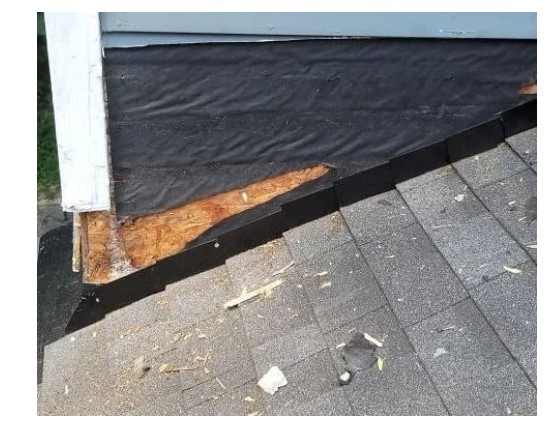
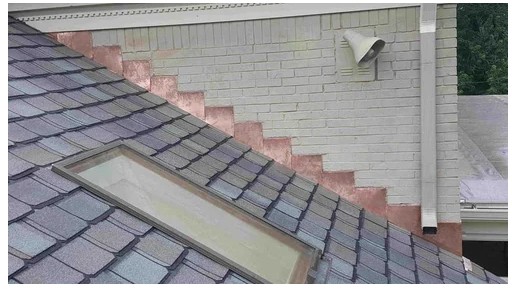
Example of counter flashing along a slope of the asphalt roof. But it is different from step flashing because the flashing is along a brick wall.
Example of valley flashing used in between two roof slopes. This helps prevent leaks from seeping in. This is typically used for luxury asphalt shingles and cedar shakes.
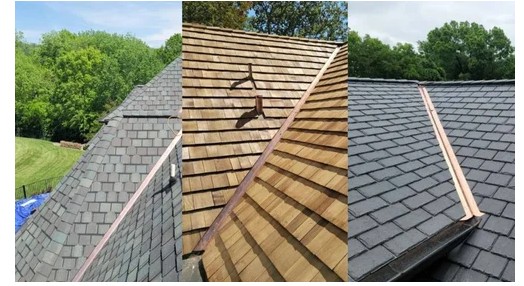
What Does Roof Flashing Really Do?
Roof flashing helps avoid water damage. Water must be properly routed off the roof surfaces. All components must capture ALL the water, be free flowing, and distribute the water away from the foundations. Improper roof drainage can lead to water infiltration, insect intrusion, rot, mold, and structural failure. In time, it can also lead to deteriorating health if not taken care of. To give you an idea of what roof drainage defects can look like, here are some pictures to show you.
Here are some examples of roof flashing defects:

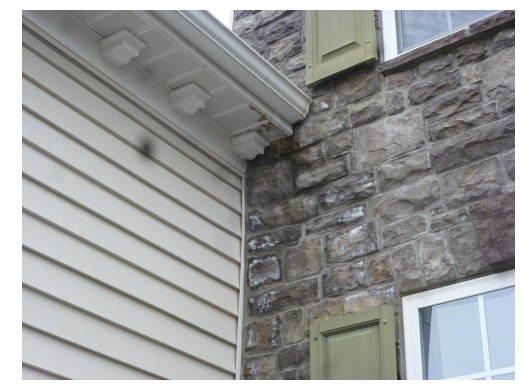
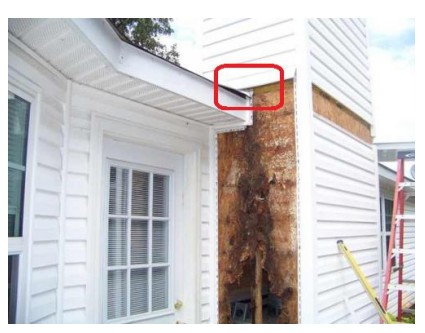
3 Things You Need To Know About Roof Flashing
- Types of Roof Flashing Metals
There are different types of metals used for roof flashing. The most common are: aluminum, steel and copper. Steel is the most common type of metal used because it fits most budgets. Cooper is the most expensive and aluminum is the least expensive, but it’s the least durable. - Replacing Flashing When Replacing Roof
It is recommended that when the roof is being replaced, ALL the components should be replaced as well, including roof flashing. This is because they won’t be susceptible to leaks using the older metals. Homeowners are better off getting everything new installed at the same time so they will have one new, seamless roof with all new components. - Roof Flashing Maintenance
To avoid future leaks and unforeseen water damage, it is recommended that a yearly maintenance inspection be conducted. It’s best to catch a minor issue before it becomes a major and an expensive problem. Roof inspections, including flashing components, are done by a roofing contractor.
Solutions to have proper roof drainage can be very simple. Here are some examples of roof flashing solutions. Again, it is recommended that you hire a qualified roofing contractor to correct any roof flashing issues.
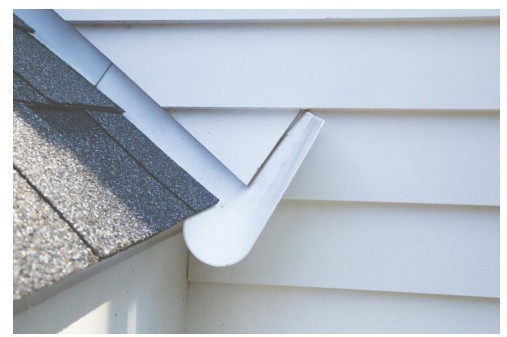

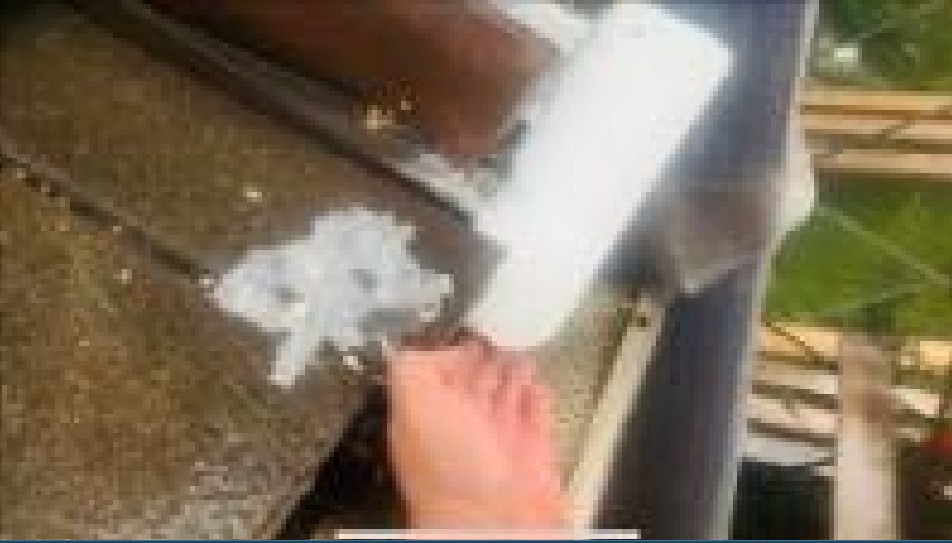
There you have it! There are some roof flashing defects and solutions that you can do to help protect your home from water damage. Hope this has given you some insight and provided you with some information so you can at least do a basic visual inspection of your home and be alerted of some potential issues you can have down the road.
Stay tuned for Week #3 of the 10-week series: “Defect #3 – Wall Flashing”
If you have any questions or need contractor referrals or know someone looking to buy or sell, feel free to email me anytime at ccr@ccrsellsrealestate.com.
The information provided for this series is from home inspection company RE Inspect – Real Estate Inspections. You can check out their website: www.re-inspect.com. Also from Bill Regan Roofing Company https://www.billraganroofing.com/blog/what-roof-flashing.
Hi, there!
I'm Carmen and I love helping first time home buyers, including Spanish speakers, buyer their first home. I also love helping sellers looking to move up or downsize to their next home. Let me know how I can help you make your real estate goals come true.
Let's Meet
Contact
201-835-5650
921 Pleasant Valley Av
Suite 200
Mt. Laurel, NJ 08054
ccr@ccrsellsrealestate.com
Buyers: tips and advice on buying your first home
My Listings
Sellers: tips on home maintenance and prepping your home for sale
Blog
schedule your free consultation